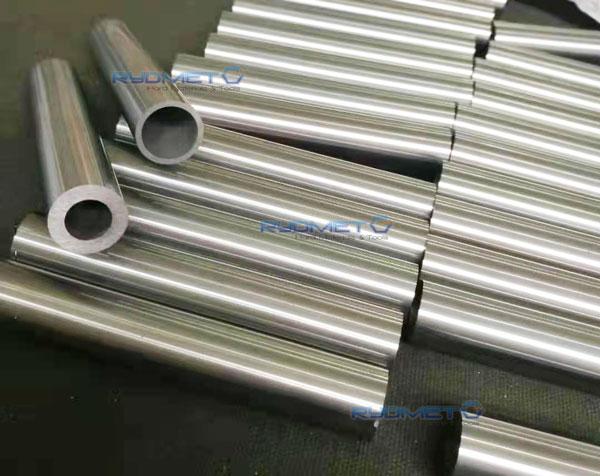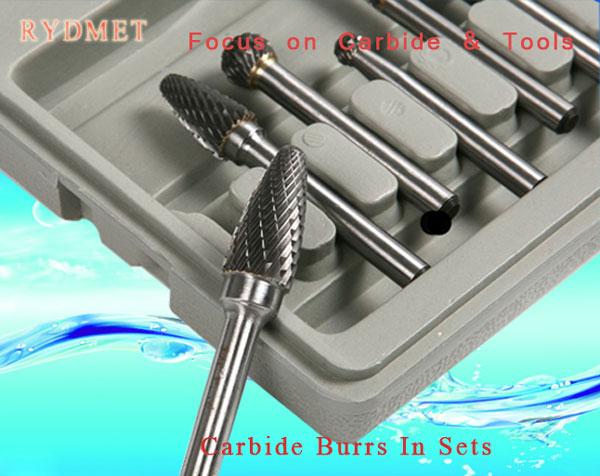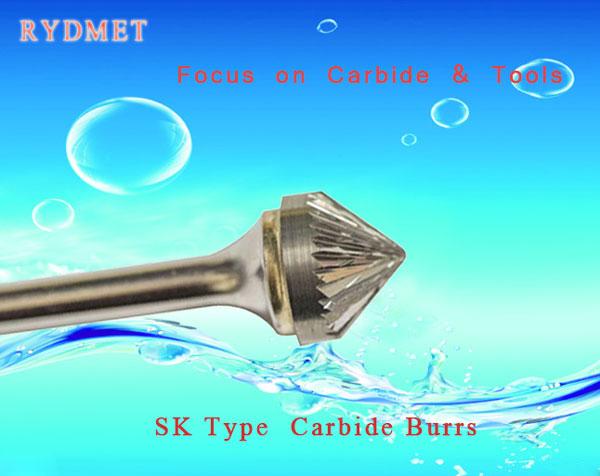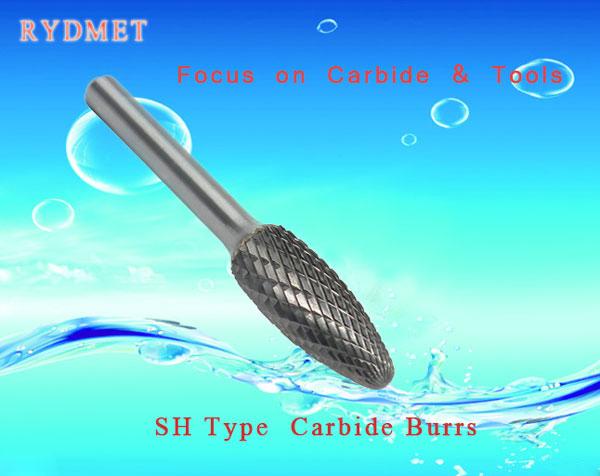How to make Good Quality Carbide Bur Blanks in Rydmet Carbide
Carbide bur blanks are essential tools used for creating rotary cutting instruments, particularly in dentistry, metalworking, and other precision industries. Manufacturing carbide bur blanks requires a high level of precision, advanced materials, and specific processes. Here’s an outline of how carbide bur blanks are typically made:
1. Material Selection: Tungsten Carbide Powder
●Tungsten Carbide (WC) is the main material used for carbide bur blanks because of its high hardness and wear resistance. This material is typically combined with Cobalt (Co), which acts as a binder to form a composite known as cemented carbide.
●Powder Preparation: Tungsten carbide powder and cobalt powder are mixed to the desired ratio (commonly 90% WC and 10% Co, depending on the application). This powder is milled to a fine consistency to ensure homogeneity.
2. Powder Blending and Mixing
●The WC and Co powders are blended together, often using ball mills or blenders. This ensures that the carbide particles are evenly distributed throughout the mixture.
●In some cases, lubricants or other additives are included to improve the compacting and sintering process.
3. Compaction (Pressing)
●Cold Isostatic Pressing (CIP) or uniaxial pressing is used to compress the powder into a blank shape. The pressing operation gives the material an initial form, typically cylindrical for carbide bur blanks.
●These pressed blanks are still relatively fragile (known as "green compacts") and require further processing.
●Below are Pressed Blanks (BSA type) Before Sintering in Rydmet Carbide China:
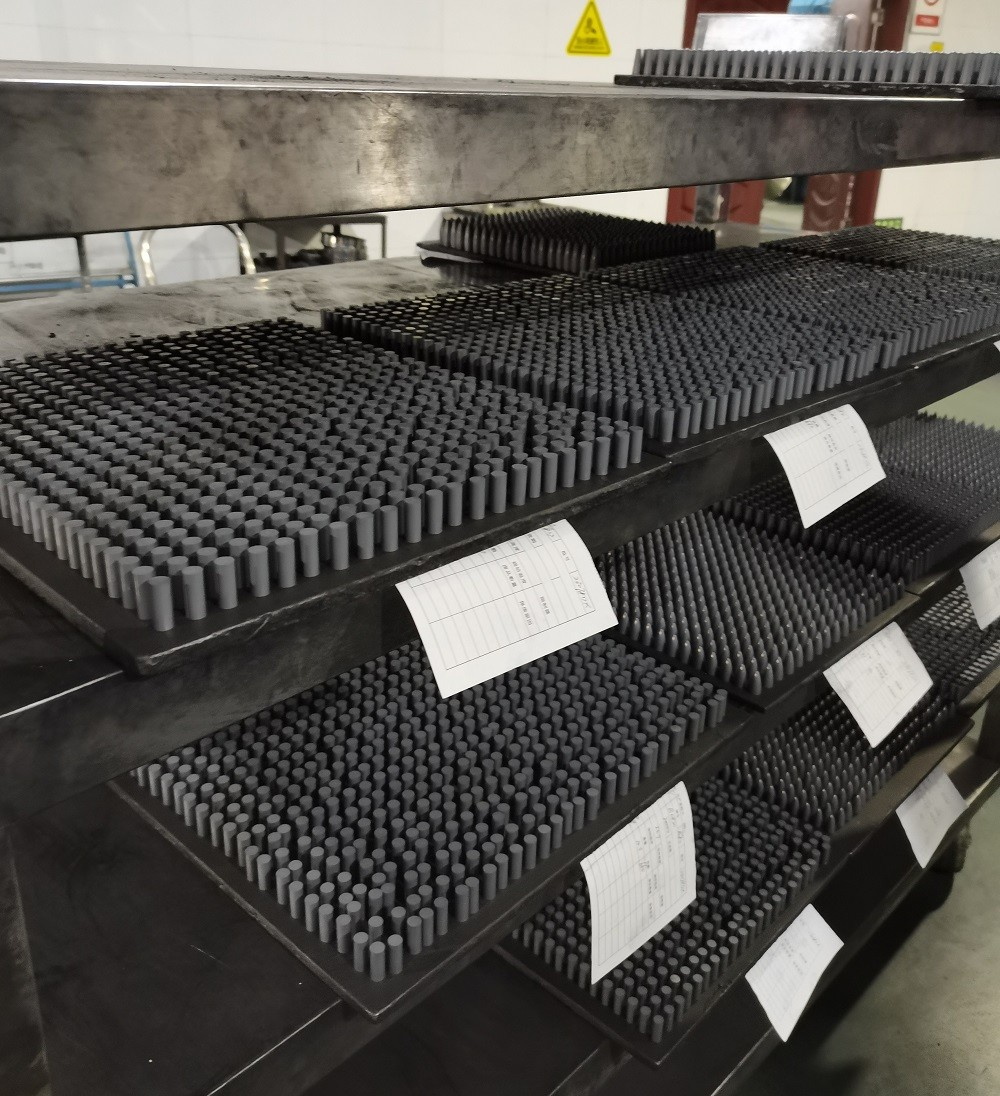
4. Pre-Sintering (Optional)
●In some cases, the green compact undergoes pre-sintering to remove any additives and increase strength for further handling. This process is done at lower temperatures (around 500–900°C) before the final sintering.
5. Sintering (Final Sintering)
●The pressed blank is then sintered in a high-temperature furnace (up to 1400–1500°C). During sintering, the tungsten carbide particles bond together, and the cobalt binder melts and fills in the gaps between the particles, solidifying the blank.
●Sintering in a vacuum or an inert gas atmosphere (like hydrogen or argon) is crucial to prevent oxidation.
Below are Sintered Carbide Blanks ( Mainly BSA style):
6. Post-Sintering Operations (Hard Machining or Grinding)
●After sintering, the carbide bur blanks are extremely hard and dense, but they often require precise shaping and dimensional adjustments.
●Grinding: Diamond grinding wheels are used to shape the blanks to their final dimensions, since carbide is too hard to be machined with standard tools.
●Tolerance control: High precision is maintained throughout this process to ensure that the blanks meet exact specifications for concentricity and surface finish.
7. Surface Finishing
●Some carbide bur blanks undergo surface treatments, such as polishing or coating, to enhance wear resistance and reduce friction in the final application.
●Coatings: In some cases, hard coatings such as titanium nitride (TiN) or diamond-like carbon (DLC) are applied to improve the performance and lifespan of the burs.
8. Quality Control and Inspection
●Each carbide bur blank is inspected for critical dimensions, hardness, surface finish, and other parameters. Non-destructive testing methods, like ultrasonic or eddy current testing, may be used to detect internal flaws.
●Batch Testing: Samples from each production batch are often tested for hardness, density, and other material properties to ensure consistency.
9. Final Application (Cutting, Grooving, and Sharpening)
●Once the blanks have passed inspection, they can be further processed to create the specific cutting profiles required for burs. This typically involves CNC machining to create grooves, teeth, or flutes in the blanks.
●The cutting profile can be customized based on the intended application (dental, industrial, etc.).
10. Packaging and Distribution
●The finished carbide bur blanks are carefully packaged to prevent damage during shipping and are distributed to manufacturers or end-users for further processing (such as adding cutting edges).
Key Considerations
●Powder Quality: The size and purity of the tungsten carbide powder play a critical role in determining the final properties of the bur blank, such as wear resistance and toughness.
●Pressing Parameters: Pressure and time during compaction affect the density and uniformity of the blank.
●Sintering Atmosphere: Controlling the furnace atmosphere prevents oxidation and ensures a uniform carbide-cobalt microstructure.
This process results in carbide bur blanks that are durable, precise, and suited for a wide range of high-speed cutting applications.
If you need any help about the Carbide Bur Blanks, please let us know, the skilled and professional staff from Rydmet Carbide will help you completely....www.rydmetcarbide.com








